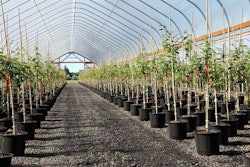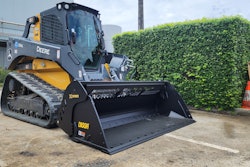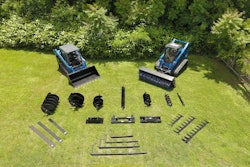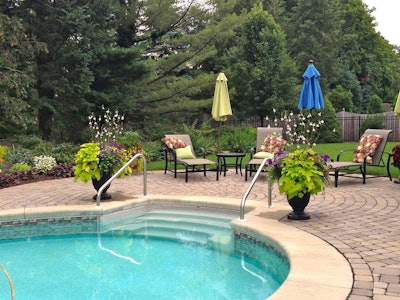 Containers can be used in numerous locations and for various purposes.
Containers can be used in numerous locations and for various purposes.Photo: The Contained Garden
Landscaping is a costly venture for most homeowners and can even scare some away, but by offering the less expensive option of container design you can save some of that business.
The design of containers has been simplified into three words: thriller, filler and spiller. However, there is much more going on here and it’s up to you to show your customers why having a professional arrange their containers is the superior option.
“Your clients could go to a big box store and pick up an inexpensive planted container and plop it in a pot, but they didn’t,” says Sheila Schultz, co-owner of Denver Dirty Girls in Denver, Colorado. “They hired you to take their containers to a different level.
“What they really want is for their friends, neighbors and strangers to stop and actually notice their container gardens and be impressed because they are obviously unique,” she says.
Here are some tips on how to build a better container:
Pay attention to detail
One reason why a client would come to you to design their containers is because you are the plant expert. You know what plants are going to survive in certain spots and can save the customer a lot of money just by selecting the appropriate plants based on sun exposure.
“I can’t tell you how many times I’ve had a customer try to put full-sun plants in a full-shade area,” says Val Johnson, owner of The Contained Garden in Syracuse, New York. “Some plants need full sun, some can do half and half, but you need to be cognizant of that.”
The size of the container will obviously dictate the amount of plants that can be used, but its style can also be a factor in plant selection.
“A dramatic agave would look totally out of place in floral or traditionally carved pot, just as a feminine collection of flowering annuals would look odd placed in a sleek contemporary pot,” Schultz says.
Remember, too, that it’s better to have a full container than a sparse one, so pack in the plants.
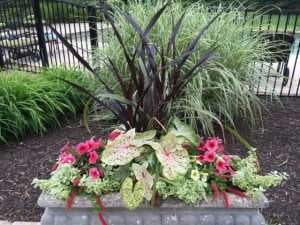 Mixed plantings like this add height and color to the landscape.
Mixed plantings like this add height and color to the landscape.Photo: Contained Beauty
“Don’t be afraid to shove them all in there,” says Kim Gamel, master gardener and owner of Contained Beauty in Ladue, Missouri. “Plant spacing requirements don’t apply when putting them in the container, just try to keep their sun and water needs the same.”
Some clients may want the plants to go with the color scheme of the pot, but Johnson always avoids putting white flowers in a white window box against a white house.
According to Gamel, the shape of the container can hint to what sort of plants are best suited for it.
“If it’s urn-shaped, it lends itself to taller plants while with a round bowl I’d use more low-growing plants,” she says.
Mind your surroundings
The container itself isn’t the only thing you have to focus on when designing. Just as it would play a part in the creation of a full-blown landscape, the architecture of the home must be considered.
Schultz suggests taking into account the colors of the home, surrounding furniture, cushions, and existing plant life when designing a container.
The great thing about containers is that they are portable, giving the client versatility they do not have with most elements of the landscape.
“You can use them anywhere – entryways, pool decks, patios – and every place is different, so you just want to look at the house and the existing structures,” says Johnson.
The purpose of the planters also helps focus the arrangement. Containers that are being used to brighten up a backyard are definitely going to look different than those intended to screen off an area.
“Businesses like to use them to screen the patio from the parking lot and homeowners can use them to create another outdoor room,” says Elizabeth Richardson, owner of Adorn, an Oklahoma City, Oklahoma, based firm that designs, installs and maintains container gardens. “If your funds are limited, it’s a great way to create curb appeal with a great pop of color.”
Design seasonally
Although it is possible to design containers so that there is something of interest throughout the year, it is better to design them seasonally. This not only keeps the flowers and foliage fresh, but gives you a steady form of income if the client has signed up for a seasonal container garden plan.
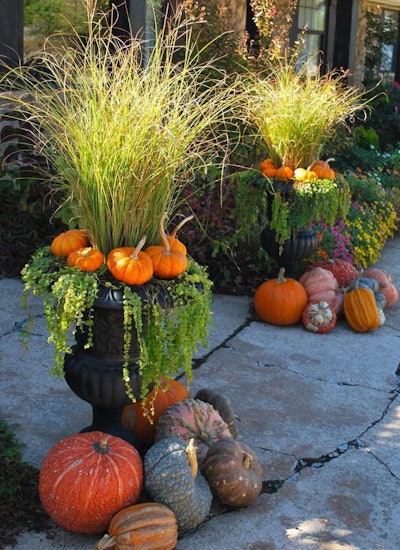 Seasonal planters can provide a steady revenue versus doing a one-time planting.
Seasonal planters can provide a steady revenue versus doing a one-time planting.Photo: Adorn
Depending on your area’s weather, the number of seasons you can offer the services will vary.
“We typically do three seasons,” Johnson says. “Spring planters can go through the summer and some go to Halloween and Thanksgiving. Some plants can transition themselves, such as grasses; I can build around the grass and change out the fillers.”
For companies like Denver Dirty Girls and Contained Beauty, summer is the best season for design. That’s when the availability of plants is highest, giving them plenty of choices to drive their creativity.
This isn’t to say that fall and winter are without their charms. Fall is Richardson’s favorite season to design for, and she decorates her planters with gourds, pumpkins, cattails, mums and crotons.
“I think people are ready for a change and it’s fun to pair less common things like white pumpkins with the flowers,” she says.
In the winter, Johnson incorporates berries, pinecones, evergreens and whatever else the client wants to fit their desired style, whether it be traditional or modern.
Mix up textures and colors
The thriller, filler and spiller formula is a good one to follow, but be careful not to become stuck in a rut because of it. For a modern style house, generally having a single species in a pot works better with the landscape.
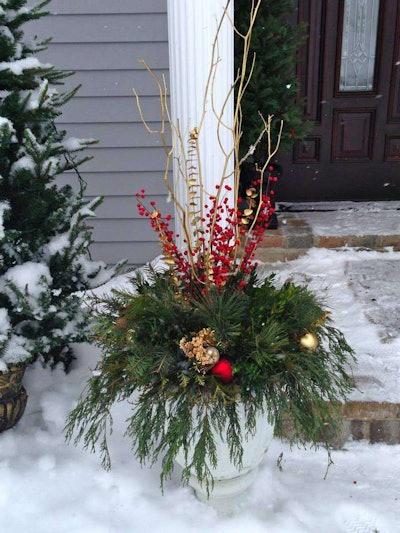 This winter container follows the thriller, filler and spiller method, but doesn’t limit itself to just plants.
This winter container follows the thriller, filler and spiller method, but doesn’t limit itself to just plants.Photo: The Contained Garden
When you are doing a thriller, filler and spiller container, the colors and textures should contrast with each other well so each plant is able to stand out from the others.
The planter’s location will determine how great the contrast needs to be. If it’s going to be at the front entrance of a home, the colors need to be able to stand out from a distance. If it going to be seen close up on a patio, then textures are more appreciated.
“Texture is more flexible in some ways, but a little texture often goes a long way,” Schultz says. “We use texture for both the containers and the plantings as design elements, something that enhances the overall look, but doesn’t take away from the other containers.”
Client preference is important when it comes to color and most of your customers will have a mental image of what they want.
“When I meet with a client, I’m more interested in what they don’t like and take it from there,” Johnson says.
Containers create possibilities that may not have been achievable in another setting. They can be used to fill in the odd gap or become the star of the garden.
“Container gardens are no longer your grandmother’s geranium and spike combos,” Schultz says. “They are now a work of art.”




